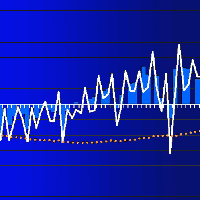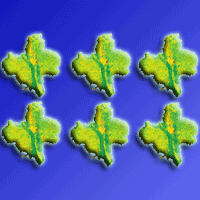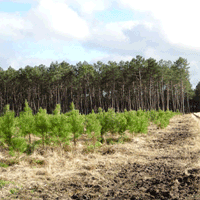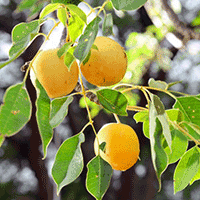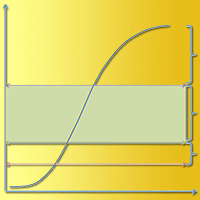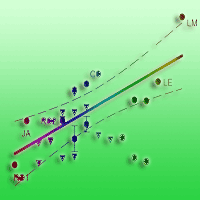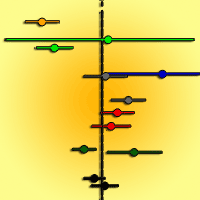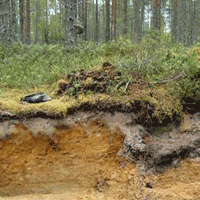Food security, climate change mitigation, and land use challenges are interlinked and need to be considered simultaneously. One possible solution is sustainable intensification, which is the practice of increasing food production per area of land whilst also reducing the environmental impacts associated with this. Agroforestry has been stated to be a practice that meets this definition. In this study, a new methodology is presented to assess the potential of different management options as sustainable intensification practices. The methodology is based on comparing the carbon emissions associated with the production of food and the carbon sequestered for that same activity for a particular quantity of food produced over a specific area and over a specific time. The resulting indicator, the “carbon balance” is the difference between the greenhouse gasses emitted (considered as negative values) and carbon sequestered (positive values) estimated in Mg CO2eq per Mg of food produced on one hectare of land for one year. The carbon balance quantifies the global warming potential associated with sustainable intensification by integrating a process-based model with life cycle analysis and is able to estimate above- and below-ground biomass and soil carbon content. This methodology is tested in Portugal for wheat production under crop monoculture and agroforestry systems. The results show agroforestry to be a suitable practice for sustainable intensification compared to a crop monoculture as it just slightly decreased wheat yields whilst providing a positive carbon balance from year 50 onwards of approximately 1 Mg of CO2eq sequestered per Mg of wheat produced.
Keywords
, , , , , , , ,
Citation
Crous-Duran J, Graves AR, Garcia-de-Jalón S, Paulo JA, Tomé M, Palma JHN (2019). Assessing food sustainable intensification potential of agroforestry using a carbon balance method. iForest 12: 85-91. - doi: 10.3832/ifor2578-011
Academic Editor
Piermaria Corona
Paper history
Received: Aug 01, 2017
Accepted: Nov 10, 2018
First online: Jan 24, 2019
Publication Date: Feb 28, 2019
Publication Time: 2.50 months
© SISEF - The Italian Society of Silviculture and Forest Ecology 2019
Open Access
This article is distributed under the terms of the Creative Commons Attribution-Non Commercial 4.0 International (https://creativecommons.org/licenses/by-nc/4.0/), which permits unrestricted use, distribution, and reproduction in any medium, provided you give appropriate credit to the original author(s) and the source, provide a link to the Creative Commons license, and indicate if changes were made.

Breakdown by View Type
(Waiting for server response...)
Article Usage
Total Article Views: 47670
(from publication date up to now)
Breakdown by View Type
HTML Page Views: 38927
Abstract Page Views: 4126
PDF Downloads: 3773
Citation/Reference Downloads: 5
XML Downloads: 839
Web Metrics
Days since publication: 2533
Overall contacts: 47670
Avg. contacts per week: 131.74
Article Citations
Article citations are based on data periodically collected from the Clarivate Web of Science web site
(last update: Mar 2025)
Total number of cites (since 2019): 6
Average cites per year: 0.86
Publication Metrics
by Dimensions ©
Articles citing this article
List of the papers citing this article based on CrossRef Cited-by.
(1)
Abrahão R, Carvalho M, Causapé J (2017)Carbon and water footprints of irrigated corn and non-irrigated wheat in Northeast Spain. Environmental Science and Pollution Research 24: 5647-5653.
CrossRef |
Gscholar
(2)
Almeida A, Maças B (2016)The history of wheat breeding in Portugal. In: “The World Wheat Book: A History of Wheat Breeding” (Bonjean AP, Angus W, Van Ginkel M eds). Lavoisier publishing, Paris, France, vol. 3, pp. 93-125.
Gscholar
(3)
Burgess PJ, Rosati A (2018)Advances in European agroforestry: results from the AGFORWARD project. Agroforestry Systems 92 (4): 801-810.
CrossRef |
Gscholar
(4)
CAOF (2010)CAOF - Comissão de Acompanhamento para as Operações Florestais [Monitoring Commission for Forest Operations]. Direção General de Agricultura e Desenvolvimento Rural, Lisbon, Portugal. Website. [in Portuguese]
Online |
Gscholar
(5)
Cardinael R, Chevallier T, Cambou A, Béral C, Barthès BG, Dupraz C, Durand C, Kouakoua E, Chenu C (2017)Increased soil organic carbon stocks under agroforestry: a survey of six different sites in France. Agriculture, Ecosystems and Environment 236: 243-255.
CrossRef |
Gscholar
(6)
Crous-Duran J, Graves A, Paulo JA, Mirck J, Oliveira TS, Kay S, Palma JHN (2018)Modelling tree density effects on provisioning ecosystem services in Europe. Agroforestry Systems. [in press]
CrossRef |
Gscholar
(7)
Cubera E, Nunes JM, Madeira M, Gazarini L (2009)Influence of
Quercus ilex trees on herbaceous production and nutrient concentrations in southern Portugal. Journal of Plant Nutrition and Soil Science 172: 565-571.
CrossRef |
Gscholar
(8)
Cuddington K, Fortin M-J, Gerber LR, Hastings A, Liebhold A, O’Connor M, Ray C (2013)Process-based models are required to manage ecological systems in a changing world. Ecosphere 4: art20.
CrossRef |
Gscholar
(9)
Den Herder M, Moreno G, Mosquera-Losada RM, Palma JH, Sidiropoulou A, Santiago Freijanes JJ, Crous-Duran J, Paulo JA, Tomé M, Pantera A, Papanastasis VP, Mantzanas K, Pachana P, Papadopoulos A, Plieninger T, Burgess PJ (2017)Current extent and stratification of agroforestry in the European Union. Agriculture, Ecosystems and Environment 241: 121-132.
CrossRef |
Gscholar
(10)
FAO (2009)Food security and agricultural mitigation in developing countries: options for capturing synergies. Food and Agriculture Organization of the United Nations, FAO, Rome, pp. 82.
Online |
Gscholar
(11)
Foley J (2011)Can we feed the world and sustain the planet? Scientific American 305: 60-65.
CrossRef |
Gscholar
(12)
García De Jalón S, Graves A, Moreno G, Palma JHN, Crous-Duran J, Kay S, Burgess PJ (2018)Forage-SAFE: a model for assessing the impact of tree cover on wood pasture profitability. Ecological Modelling 372: 24-32.
CrossRef |
Gscholar
(13)
Glover JD, Reganold JP, Cox CM (2012)Agriculture: plant perennials to save Africa’s soils. Nature 489: 359-361.
CrossRef |
Gscholar
(14)
Godfray HCJ, Beddington JR, Crute IR, Haddad L, Lawrence D, Muir JF, Pretty J, Robinson S, Thomas SM, Toulmin C (2012)Food Security: the Challenge of Feeding 9 billion. Science. 327: 812.
CrossRef |
Gscholar
(15)
Godfray HCJ, Garnett T (2014)Food security and sustainable intensification. Philosophical Transactions of the Royal Society B: Biological Sciences 369: 1-10.
CrossRef |
Gscholar
(16)
Gonzalez-Garcia S, Dias AC, Arroja L (2013)Life-cycle assessment of typical Portuguese cork oak woodlands. Science of the Total Environment 452-453: 355-364.
CrossRef |
Gscholar
(17)
Graves AR, Burgess PJ, Palma JHN, Keesman KJ, Van Der Werf W, Dupraz C, Van Keulen H, Herzog F, Mayus M (2010)Implementation and calibration of the parameter-sparse Yield-SAFE model to predict production and land equivalent ratio in mixed tree and crop systems under two contrasting production situations in Europe. Ecological Modelling 221: 1744-1756.
CrossRef |
Gscholar
(18)
Graves AR, Morris J, Deeks LK, Rickson RJ, Kibblewhite MG, Harris JA, Farewell TS, Truckle I (2015)The total costs of soil degradation in England and Wales. Ecological Economics 119: 399-413.
CrossRef |
Gscholar
(19)
IDAE (2005)Consumos energéticos en las operaciones agrícolas en España [Energetic consumptions in agricultural operations in Spain]. Ministerio de Agricultura, Pesca y Alimentación del Gobierno de España, Madrid, Spain.
Online |
Gscholar
(20)
IPCC (2006)Guidelines for national gas inventories. Chapter 10 - Emissions from livestock and manure management (Egleston S ed). IGES, Hayama, Japan, pp. 87.
Online |
Gscholar
(21)
Jose S (2009)Agroforestry for ecosystem services and environmental benefits: an overview. Agroforestry Systems 76: 1-10.
CrossRef |
Gscholar
(22)
Kramer KJ, Moll HC, Nonhebel S (1999)Total greenhouse gas emissions related to the Dutch crop production system. Agriculture, Ecosystems and Environment 72: 9-16.
CrossRef |
Gscholar
(23)
Moreno G, Aviron S, Berg S, Crous-Duran J, Franca A, De Jalón SG, Hartel T, Mirck J, Pantera A, Palma JHN, Paulo JA, Re GA, Sanna F, Thenail C, Varga A, Viaud V, Burgess PJ (2017)Agroforestry systems of high nature and cultural value in Europe: provision of commercial goods and other ecosystem services. Agroforestry Systems 92 (4): 877-891.
CrossRef |
Gscholar
(24)
Mäkelä K (2002)LIPASTO calculation model: unit emissions of traffic. VTT Technical Research Centre of Finland, Espoo, Finland, Website.
Online |
Gscholar
(25)
Nair PK (2007)The coming of age of agroforestry. Journal of the Science of Food and Agriculture 87: 1613-1619.
CrossRef |
Gscholar
(26)
Palma JHN, Graves AR, Bunce RGH, Burgess PJ, De Filippi R, Keesman KJ, Van Keulen H, Liagre F, Mayus M, Moreno G, Reisner Y, Herzog F (2007)Modeling environmental benefits of silvoarable agroforestry in Europe. Agriculture, Ecosystems and Environment 119: 320-334.
CrossRef |
Gscholar
(27)
Palma JHN, Paulo JA, Tomé M (2014)Carbon sequestration of modern
Quercus suber L. silvoarable agroforestry systems in Portugal: a Yield SAFE-based estimation. Agroforestry Systems 88: 791-801.
CrossRef |
Gscholar
(28)
Palma JHN, Graves A, Crous-Duran J, Upson M, Paulo J, Oliveira TS, Garcia De Jalón S, Burgess P (2016)Yield-SAFE model improvements. Report for Milestone 29 (6.4) for the EU FP7 Research Project: AGFORWARD 613520. Lisbon (Portugal) 5 July 2016, pp. 30.
Online |
Gscholar
(29)
Palma JHN (2017)Clipick - climate change web picker. A tool bridging daily climate needs in process based modelling in forestry and agriculture. Forest Systems 26: 1-4.
CrossRef |
Gscholar
(30)
Palma JHN, Crous-Duran J, Graves A, Garcia De Jalon S, Upson M, Oliveira T, Paulo J, Ferreiro-Dominguez N, Moreno G, Burgess P (2017a)Integrating belowground carbon dynamics into Yield-SAFE, a parameter sparse agroforestry model. Agroforestry Systems. 92: 1047-. . org.
CrossRef |
Gscholar
(31)
Palma JHN, Oliveira TS, Crous-Duran J, Graves A, Garcia De Jalon S, Upson M, Giannitsopoulos M, Burgess P, Paulo JA, Tomé M, Ferreiro-Dominguéz N, Mosquera-Losada MR, Gonzalez-Hernández P, Kay S, Mirk J, Kanzler M, Smith J, Moreno G, Pantera A, Mantovani D, Rosati A, Luske B, Hermansen J (2017b)Modelled agroforestry outputs at field and farm scale to support biophysical and environmental assessments. Deliverable 6.17 (6.2) of the EU FP7 Research Project: AGFORWARD 613520, pp 162.
Online |
Gscholar
(32)
Palma JHN, Cardoso RM, Soares PMM, Oliveira TS, Tomé M (2018)Agricultural and forest meteorology using high-resolution simulated climate projections in forest process-based modelling. Agricultural and Forest Meteorology 263: 100-106.
CrossRef |
Gscholar
(33)
Pereira PM, Fonseca MP (2003)Nature
vs. nurture: the making of the montado ecosystem. Conservation Ecology 7(3): 7.
Online |
Gscholar
(34)
Petersen B, Snapp S (2015)What is sustainable intensification? Views from experts. Land Use Policy 46: 1-10.
CrossRef |
Gscholar
(35)
Pinto-Correia T (1993)Threatened landscape in Alentejo, Portugal: the “montado” and other agro-silvo-pastoral systems. Landscape Urban Planning 24: 43-48.
CrossRef |
Gscholar
(36)
Pinto-Correia T, Ribeiro N, Sá-Sousa P (2011)Introducing the montado, the cork and holm oak agroforestry system of Southern Portugal. Agroforestry Systems 82: 99-104.
CrossRef |
Gscholar
(37)
Rajaniemi M, Mikkola H, Ahokas J (2011)Greenhouse gas emissions from oats, barley, wheat and rye production. Agronomy Research 9: 189-195.
Online |
Gscholar
(38)
Rivest D, Rolo VV, López-Díaz L, Moreno G, Lopez-Diaz L, Moreno G (2011)Shrub encroachment in Mediterranean silvopastoral systems:
Retama sphaerocarpa and
Cistus ladanifer induce contrasting effects on pasture and
Quercus ilex production. Agriculture, Ecosystems and Environment 141: 447-454.
CrossRef |
Gscholar
(39)
Rosado MM (2009)Contributo para a integração da componente ambiental na avaliação económica de sistemas de produção agro-pecuários [Contribute for the integration of the environmental component in the economic evaluation of farming systems production]. PhD Dissertation, Evora University, Portugal, pp. 335. [in Portuguese]
Online |
Gscholar
(40)
Sereke F, Graves AR, Dux D, Palma JHN, Herzog F (2015)Innovative agroecosystem goods and services: key profitability drivers in Swiss agroforestry. Agronomy for Sustainable Development 35: 759-770.
CrossRef |
Gscholar
(41)
Siddique KHMM, Belford RK, Tennant D (1990)Root:shoot ratios of old and modern, tall and semi-dwarf wheats in a Mediterranean environment. Plant and Soil 121: 89-98.
CrossRef |
Gscholar
(42)
Tilman D, Balzer C, Hill J, Befort BL (2011)Global food demand and the sustainable intensification of agriculture. Proceedings of the National Academy of Sciences USA 108: 20260-20264.
CrossRef |
Gscholar
(43)
Torralba M, Fagerholm N, Burgess PJ, Moreno G, Plieninger T (2016)Do European agroforestry systems enhance biodiversity and ecosystem services? A meta-analysis. Agriculture, Ecosystems and Environment 230: 150-161.
CrossRef |
Gscholar
(44)
Van Der Werf W, Keesman K, Burgess PJ, Graves AR, Pilbeam D, Incoll LD, Metselaar K, Mayus M, Stappers R, Van Keulen H, Palma JHN, Dupraz C (2007)Yield-SAFE: a parameter-sparse, process-based dynamic model for predicting resource capture, growth, and production in agroforestry systems. Ecological Engineering 29 (4): 419-433.
CrossRef |
Gscholar
(45)
Vermeulen SJ, Campbell BM, Ingram JS (2012)Climate change and food systems. Annual Review of Environment and Resources 37: 195-222.
CrossRef |
Gscholar
